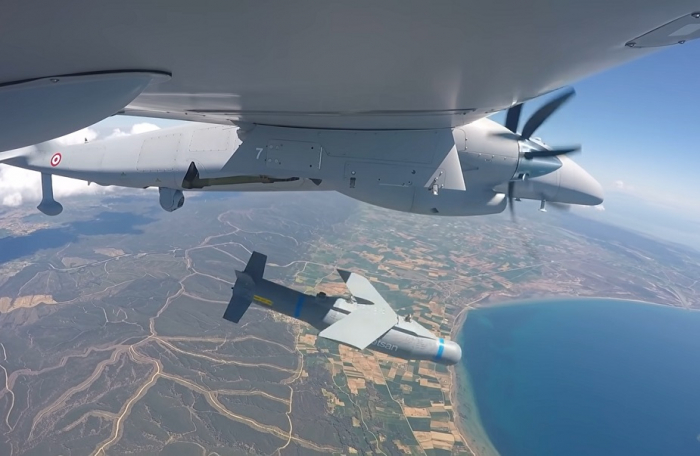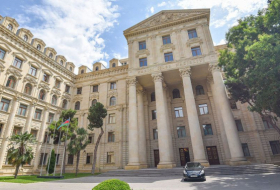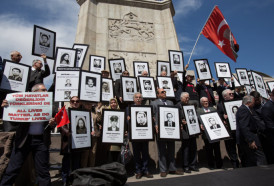Of course, it would be better for humanity to mull over the question “What can be done to prevent the occurrence of new wars?” However, in fact, the question “What will be the future of warfare?” is more relevant today. The correct answer to this question is a matter of life and death, for this reason, think tanks in many countries are seeking an answer.
All opinions suggest that the confrontation of unmanned vehicles will shape future wars. These views were found to be even stronger after the Second Karabakh War. In this regard, an interesting question arises: Why after the Second Karabakh War? After all, before the Second Karabakh War, the world had at least 70 years of experience in the use of drones. Why did Azerbaijan's innovations force numerous countries to reconsider their security concepts?!
“New star”
Having entered the high-tech arms market in 2014, Turkey managed to shake the market, overtaking traditional players. Over the past decade, Turkey recorded a fourfold growth in defence and aerospace exports. Today, Turkey is among a handful of countries whose names are associated with unmanned aerial vehicles. Turkish-made drones and other defence products have become a global brand.
Until recently, the United States, Israel, China and Turkey topped the global UAV market, which is projected to cost nearly $100 billion by 2030. However, Turkish-made Bayraktar shook China’s position in the market. Beijing claims its Wing Loong II drone costs nearly $120 per flight hour. In fact, this figure is estimated at $1,000, and the average frequency of accidents amounts to 1 every 15,000 hours. However, Bayraktar drones cost nearly $166 per flight hour, with the average frequency of accidents standing at 1 every 30,000 hours. In this case, Chinese drones, of course, would be unable to compete with Turkish ones having numerous superiorities.
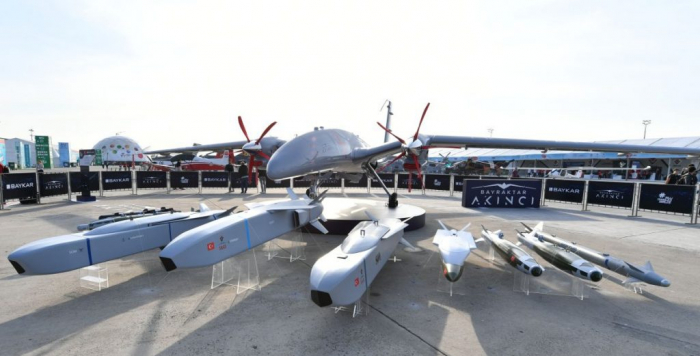
Not surprisingly, the latest data by Baykar company show that the number of countries receiving Bayraktar TB2 drones has reached 13. Ukraine, Poland, Turkmenistan, Kyrgyzstan, Qatar, Libya and Morocco have already begun acquiring the Turkish-made drones. Furthermore, the Turkish company is in talks with Tunisia, Saudi Arabia, Iraq, Lithuania, Latvia, Albania, Pakistan, Ethiopia, Oman, Nigeria, Bosnia and Herzegovina, Albania and Serbia on the sale of Bayraktar drones.
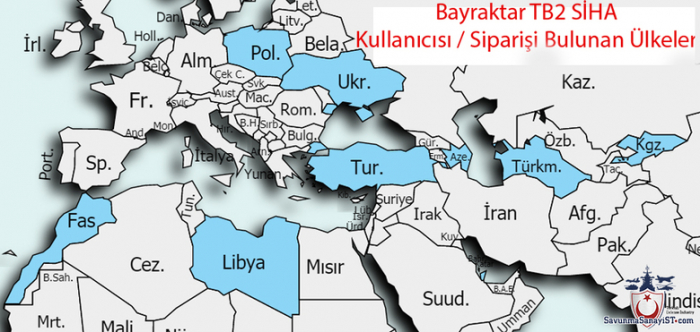
The situation has changed a bit after Turkey started using the cutting-edge Akinci combat drone, which is capable of effectively destroying both air and land targets at high altitudes. Having included Akinci in the arsenal of its Armed Forces, Turkey has completed the supply of unmanned aerial vehicles capable of operating at all altitudes. Besides, Akinci has an unusual ability to fire a swarm of 10 Alpagu suicide drones. This is a paramount issue, as a swarm of drone strikes are projected to become a new trend in the non-contact warfare soon.
“Unity is strength”
In the evening of January 2018, a swarm of 13 drones targeted Russia’s Hmeymim airbase in western Syria. Defence expert Paul Scharre concluded that this incident was the first attack by a swarm of drones. In September 2019, one of the oil facilities of Saudi Arabia’s Aramco was attacked by nearly 20 drones. Thus, it indicates that the use of a swarm of drones is becoming a reality.
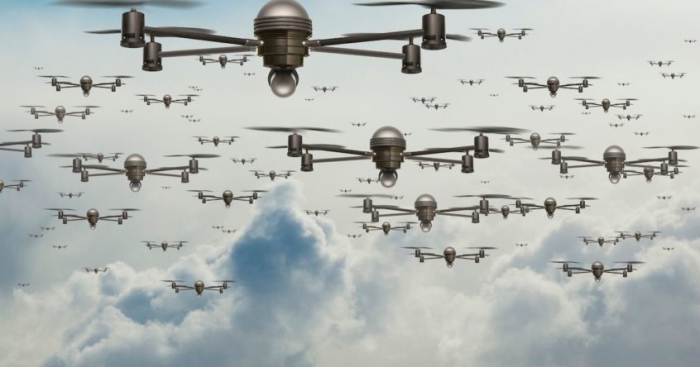
“Individuals” of this swarm – for example, the Turkish-made Kargu suicide drone, at first glance, seems unserious, even funny to some extent. However, it is more likely to become of the major forces in future wars. The drones, which can act as a swarm and as a whole, are still in the early stages of their evolution. Numerous countries have already started investing millions of dollars in the development of this sector.
Analysts estimate that cutting-edge drone swarms will be able to assess targets, carry out the division of tasks and implement them with limited human intervention. To that end, drones must be equipped with artificial intelligence, as an individual cannot coordinate the operation of dozens of devices at the same time. In the case of AI-equipped drones, the only thing left to do is to command.
Today, the major manufacturers of micro-drones are the United States, the United Kingdom, Japan and South Korea. However, Akinci’s ability to launch a swarm of drones is testimony to the fact that Turkey has also made great strides in this sector.
Advantages of the Turkish-made drone
Akinci, capable of flying at an altitude of 12 km, is equipped with AI, radio-electronic warfare and other advanced systems, which allow precisely detecting, tracking and destroying targets. This drone has also an auto home return feature.
The production of the Akinci drone made Turkey become the third country in the modern UAV market. Along with Akinci weighing 6 tons, the Bayraktar TB3, which is among the Bayraktar TB 2 series, will also perform test flights this year. Bayraktar TB3, capable of taking off and landing vertically on aircraft carriers, is unique in the world.
What’s most important is that Turkey has already begun to assemble drones mainly using locally-made components and this sole factor allows them to be sold freely on a global scale. For example, Bayraktar TB2 drones were previously equipped with Canadian-made WESCAM optical cameras. After the Canadian government protested the sale of these UAVs to Azerbaijan during the Second Karabakh War, Baykar company altered WESCAM cameras with CATS produced by local company ASELSAN.
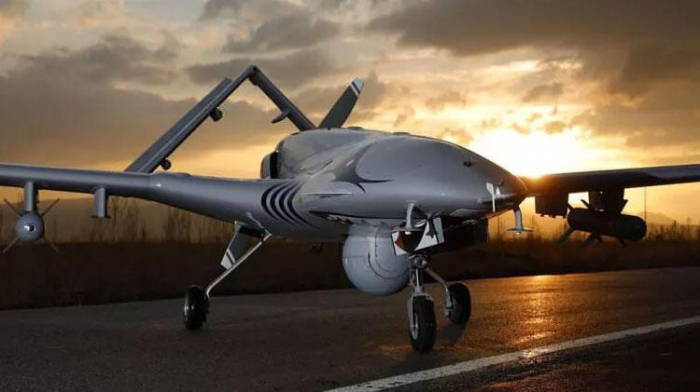
Turkey has already agreed with Ukraine to set up a joint venture to eliminate dependence on UAV engines. However, Turkey is determined to launch the production of engines itself as soon as possible. The main goal for the near future is to assemble all UAVs from purely local components.
According to the statement made by the technical director of “Baykar” Selcuk Bayraktar, Azerbaijan will be the only foreign country with a significant role in the production of Akinci UAV of the HALE class. The production of such UAVs, which fly at high altitude requires special industrial attention. The establishment of this production in Azerbaijan will significantly affect Azerbaijan’s position in the world arms industry.
Turkey has caught the wave in global arms production and doesn’t intend to miss this opportunity. Turkey aims to become the leading country in the military industry by developing ‘Hurkus’ aircraft, ATAK helicopters, ‘Bayraktar’, ‘Kargu’ and ANKA UAVs and integrating UAVs through air and ground means. Turkey claims to become a leading country in the world military industry by developing the Hurkus aircraft, ATAK helicopters, Bayraktar, Kargu and ANKA air defense systems, and by integrating air and ground air defense systems.
Considering the ratio of price/efficiency, today Turkey doesn’t have a rival. The issue is that the UAVs can be sacrificed on the battlefield; The "consumption material" of $ 20-50 million seems illogical. Purchasing ‘MQ-9 Reaper’ for $ 20 million and sacrificing it cannot be a tactic. Although Turkey was not the first country producing UAVs, it was the very country changing the character of the war. Not only the war: Today Turkish UAVs have also become political and diplomatic factors. Turkey may affect the situation in the region by simply selling UAVs to any country.
More about: #TurkishDrones








